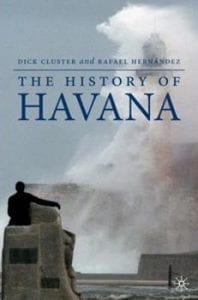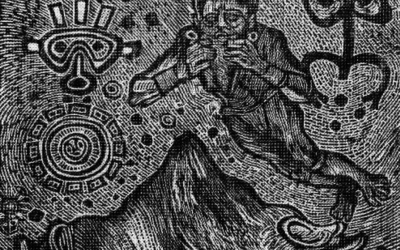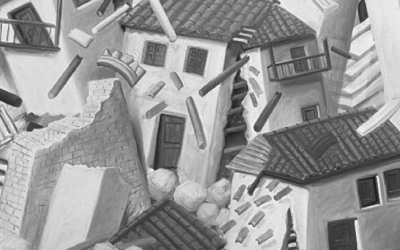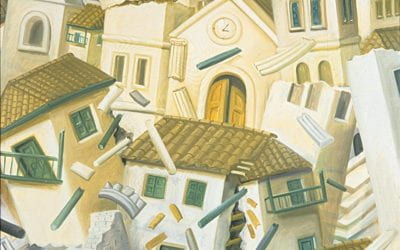A Review of The History of Havana

The History of Havana By Dick Cluster and Rafael Hernández Palgrave Macmillan, New York, 2006, 300 pages
“This city is the most welcoming place,” begin Dick Cluster and Rafael Hernández, the former a well-regarded novelist and social critic and the latter a Cuban social scientist, poet and editor of Temas, perhaps the scrappiest academic journal in contemporary Cuba.
The city to which Cluster and Hernández refer is Havana.
Well, okay, let’s concede that Havana is indeed a welcoming place. But who would pick Havana as their favorite city over, say, Prague or Paris or Petaluma? What makes Havana so special? That’s what The History of Havana sets out to explain to those of us who were not born there, like Hernández, or have not had the opportunity to roam the city’s streets since 1969, absorbing their flavors and capturing their character, like Cluster.
The authors inform us that they have not written a history of Cuba per se, but they warn that “we cannot write a history of its capital without doing some of that,” and the pages that follow are indeed the story of much more than a city’s evolution. Cluster and Hernández also tell us that we’ll get a generous dose of what one expects of a volume—say, Havana’s architecture and urban planning (or the lack thereof). But, the authors note, “primarily we’ve tried to tell the story of its people, at all rungs of society, including those who have left many records and monuments behind them and those who have left almost none.” (xviii-xix)
So off we go, starting with the 15th century. But by page eight, we’re already in the 16th and moving fast, but fortunately, not so fast that we fail to learn about Madrid’s grand designs and its important improvements. For example, we learn that the population was provided with drinking water that came from the Almendares River, miles to the west and connected to what we now call Old Havana via a trench (zanja) that passed through today’s Centro Habana and Barrio Chino to end as the little alleyway at the back of the Plaza de la Catedral, the tiny street today’s visitors walk up to enter the Taller Experimental de la Gráfica.
Given its strategic location, by the mid-18th century Havana’s population was significantly larger than Philadelphia and three times the size of New York. In both riches and population, it was rivaled only by Lima and Mexico in the Spanish empire. That word “riches” is, of course, a foreboding one: enter both the pirates and, since this was the time of the Seven Years War, the British navy, bearing boatloads of soldiers from New York, who knew better than to brave the guns protecting Havana’s entrance. Instead, they landed to the east and west, then marched in from behind to subdue the Spanish defenders. The Redcoats left only after the war’s settlement liberated Spain from its imperial responsibilities in Florida, Canada, and several key spots stretching eastward from the Mediterranean to India.
Thereafter, Havana returned to normal, but now that the city’s purchasing power had been revealed, the doors to commerce opened by the British were impossible to close oncethe city’s purchasing power, By the late 1840s, the United States had become Cuba’s principal trading partner, with England second and Spain a distant third. In the 19th century, the city became thoroughly internationalized. When Old Havana was placed on UNESCO’s World Heritage List in the late 20th century and the Historian of the City initiated today’s remarkable restoration effort, workers began to unearth what the traders had left behind: bottles of Dutch gin, packets of English toothpaste, and tins of Phillips Milk of Magnesia. The traders and travelers also left behind their diaries, among them the complaints of Richard Henry Dana, who failed to adjust to Cuba’s decidedly un-Puritan rhythms. “For sleeping, I might as well have been stretched out on the bass drum,” he wrote, describing the drum of the band playing outside his hotel window.
Dana was not the last Yankee to discover that Cubans know how to party, and on the eve of the Cuban Revolution, Graham Greene explained why he selected Cuba’s capital as the setting for his novel Our Man in Havana: it was “this extraordinary city where very vice was permissible and every trade possible”(190). Gambling was perhaps the principal vice, one that Cubans had already developed in cockfighting, cards, dice, and the illegal numbers racket, la bolita. But in the 1950s, the U.S. mafia promoted a new style of luxury casino gambling dominated by blackjack and roulette, accompanied by all the drugs and prostitution that vacationing Yankees could purchase but would never tolerate at home.
Then came the Revolution, which “first and foremost, made the citizens of Havana conscious as never before that they inhabited the privileged capital of an island whose countryside had long teemed with poverty, hunger, curable diseases, illiteracy and neglect.” Along with this realization came a commitment to rectify this disparity which, “together with ideological radicalism and the politics of state socialist centralism, meant that the victorious revolution would pour more resources into the interior than the capital”(224-25).
As with the rest of the Revolution, the evaluation of this shift is still in the hands of the jury of historians who will spend the 21st century debating the Revolution’s legacy, but there will be no dispute over Havana’s suffering during the Special Period after the collapse of the Soviet bloc, when Cubans once again had to endure the painful process of revolutionizing their economy. Food became scarce—so scarce that eggs came to be known as americanos, “because no one knows when they are coming or how many they will be”; gasoline was unavailable; and only ten percent of Havana’s busses remained in service. “For many thousands, the Special Period brought a bicycle trip of five to fifteen miles every morning and afternoon…. Between the biking and the reduced diet, Havana became a city of citizens who ranged from slender to skinny. Very few looked like their photos of a few years before.” (256-57)
Then, in mid-1994, a few days after the first anti-government demonstrations broke out in Centro Habana, the government announced the re-opening of the farmers’ markets that had been closed by the “rectification” program of the late 1980s, and Cuba, now desperate for hard currency, also intensified the effort to re-start its tourist industry. Cluster and Hernández clearly approve of the re-opened markets, but they complain—and well they might—about the “eruptions of contemporary bad taste,” as the silhouette of the city’s beachfront suburbs is scratched by new hotels “that appeared to have been flown in from Cancún” (263). But they acknowledge the graceful reconstruction of Old Havana’s many treasures, including such tourist-centered gems as the hotels Santa Isabel, Telégrafo, and Florida. It will be interesting to see how historians assess the influence of tourism. While the impact of a few too many fanny packs attached to the waists of generally inoffensive Canadians and Europeans may be minimal, no one can help but shudder, as Cluster and Hernández do, at the apparently unavoidable affront of tourist apartheid.
What we know today is that the adjustment has been a slow and painful process. Cluster and Hernández tell us that in time “most habaneros gained back the weight they had lost, and the sea of bikes in the streets ebbed, so that Havana in peak commuting hours no longer seemed too much like Hanoi.” At the end of their charming volume they tell us that the city’s residents are emerging from a long, dark tunnel and entering into a very different place than the one they had entered a decade before. It was, they conclude, a tunnel leading into a twilight zone, something that was no longer the Special Period but as yet had no name.” (271-72)
Winter 2007, Volume VI, Number 2
Lars Schoultz is a professor of political science at the University of North Carolina at Chapel Hill.
Related Articles
Editor’s Letter: Natural Disasters
We were little black cats with white whiskers and long tails. One musical number from my one and only dance performance—in the fifth grade—has always stuck in my head. It was called “Hernando’s Hideaway,” a rhythm I was told was a tango from a faraway place called Argentina.
After the Earthquake: Juan’s Life
Juan was a construction helper. He lived in Armenia, but his parents were from the Antioquia region, who had fled because of the violence there. The mother of his children was called…
Political Memory
Late in 1717 Dr. Joseph Surin, precentor of the Cathedral of Old Guatemala, carried out some calculations: had the mudslide that wiped the city on the 28th of August, feast day of Saint…




